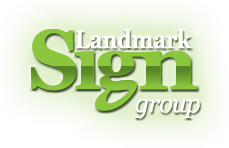6.22.2016
Three ways the Internet of Things will evolve Healthcare signage
As the Internet of Things and Healthcare become better acquainted with one-another, they continue to remember their friends who helped them find each other, especially digital and outdoor signage.
Below are three ways in which Digital and Outdoor Signage are included into the IoT revolution.
1) Software applications
The great thing about today's software application is in their ability to communicate with different types of devices, regardless of manufacturers. Not only does this help marketers work with the devices in your arsenal, it also allows you to centralize control of the messaging. The centralization allows for syndication of the same message over multiple mediums: indoor signs, outdoor signs, websites, mobile devices & tablets.
2) Interaction
Signs are becoming more than one-way broadcast devices. They interact with customers. They give QC codes. They validate tickets. Some even provide drinking water. Thanks to the Internet of Things, signs have gone become actual full-time salesmen for your company.
For hospitals, the signs will be able to tell customers which waiting room would be closest to their loved ones and give reminders about the cafeteria closings. It will allow patients and visitor to interact with signs to get directions. With apps and logins, hospital signage will be able to give them directions to their appointment. For doctors, they'll be able to get all the diagnostics and specs on patients in a room or in surgery, and look at it on the signs or have it transferred over to their tablets. Or both.
3) Monitoring and tracking
Digital and outdoor signage are more than just televisions. Especially the new machines, they not only can handle the aforementioned software applications, but they can provide crucial data. It sounds trivial at first, but as signage continues to include more interactive features, software applications can provide analytics to let businesses know how, when, what, and for how long sign applications were used.
These bits of data will allow hospital administrators and staff to see how patients and visitors navigated their way around the hospital. They'll be able to see what works, what doesn't, and improve the overall process.
The best is yet to come
As the digital signage market is expected to reach over 20 billion within the next 10 years, their features and ability to provide businesses with detailed accounts of user activity will continue to blossom into a bountiful garden of opportunities and information.
The end result will not only help keep medicine in tune with the 20th century, but improve how hospitals can treat patients. At least, the signs are pointing that way.



